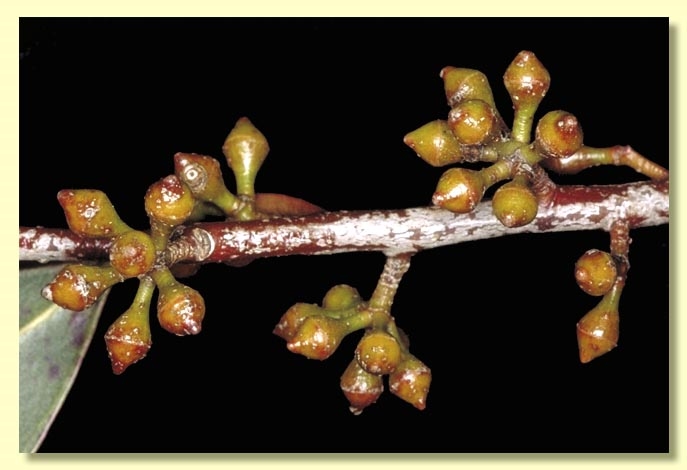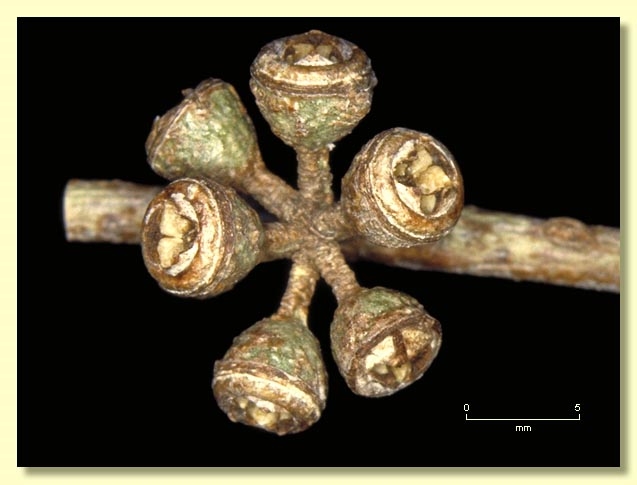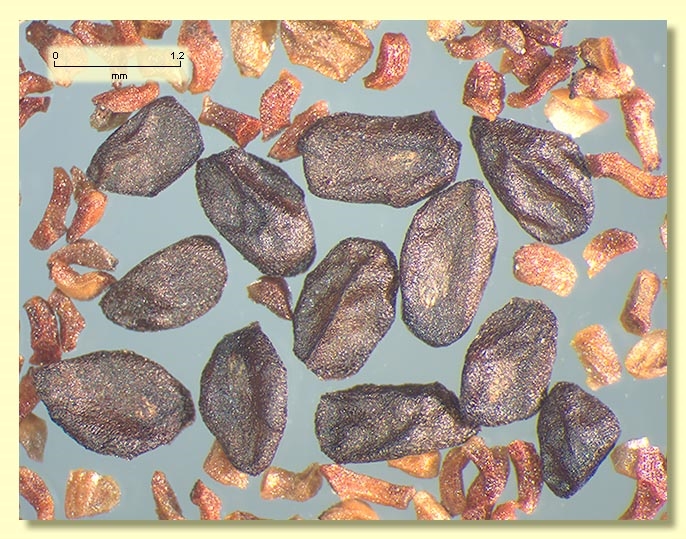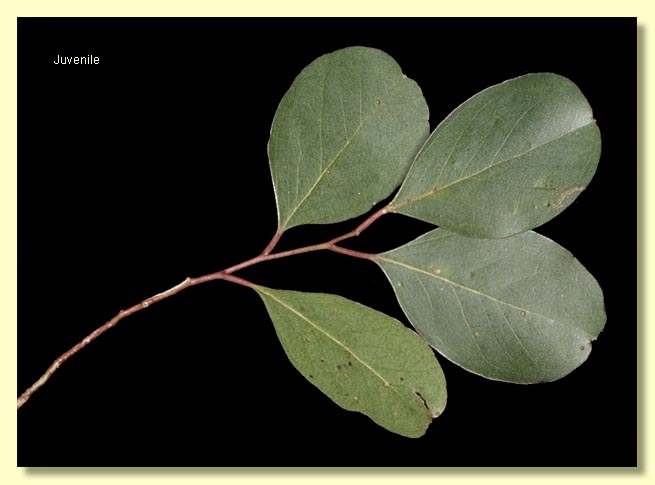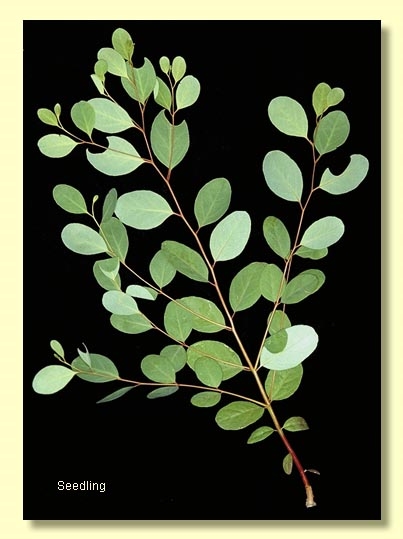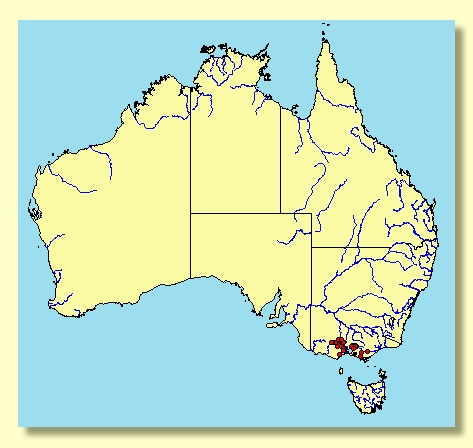Euclid - Online edition
Eucalyptus yarraensis
Eucalyptus | Symphyomyrtus | Maidenaria | Triangulares | Foveolatae
Bark rough over whole trunk and to 10 cm diameter branches, box-type, at times tessellated in part, grey; smooth bark of branches white to cream and green-brown.
Juvenile growth (coppice or field seedlings to 50 cm): stem rounded in cross-section; juvenile leaves opposite for 4 to 6 nodes then alternate, petiolate, elliptical to ovate, 2.5–6.3 cm long, 2–4.3 cm wide, base tapering to petiole, glossy, green.
Adult leaves alternate, petiole 1–2.8 cm long; blade lanceolate to elliptical to ovate, 6–13.5 cm long, 1.7–4 cm wide, usually undulate, base tapering to petiole, concolorous, glossy, green, side-veins greater than 45° to midrib, densely to very densely reticulate, intramarginal vein parallel to and well removed from margin, oil glands usually absent.
Inflorescence axillary unbranched, peduncles 0.4–1.5 cm long, buds 7, pedicellate, pedicels 0.2–0.3 cm long. Mature buds diamond-shaped to ovoid (0.35–0.6 cm long, 0.3–0.4 cm wide), green, scar present, operculum conical or beaked (0.2–0.35 cm long), stamens usually inflexed, anthers cuboid or cuneate, versatile, dorsifixed, dehiscing by longitudinal slits (non-confluent), style long, stigma blunt or tapered, locules 3 or 4, the placentae each with 4 vertical ovule rows. Flowers white.
Fruit pedicellate, pedicels 0.1–0.4 cm long, obconical, 0.3–0.5 cm long, 0.4–0.5 cm wide, disc level or raised-annular, valves 3 or 4, slightly exserted or near rim level.
Seeds grey, brown or black, 1–2.5 mm long, ovoid or flattened-ovoid, often pointed at one end, often lacunose, dorsal surface shallowly pitted, hilum ventral.
Cultivated seedlings (measured at ca node 10): cotyledons bilobed; stems usually rounded in cross-section; leaves petiolate, opposite for 4 to 6 nodes then alternate, orbicular to ovate-lanceolate, 2–6 cm long, 1.5–4 cm wide, base tapering, margin entire, apex pointed to rounded, slightly discolorous, dull, mid-green above, paler below.
Flowering has been recorded in September, November and December.
A small to medium-sized tree endemic in Victoria and occurring from west of Glengarry to Melbourne and north-west to Daylesford and Ararat. Most of its natural area of distribution is very fragmented by clearing but the remanants tend to be small pure stands of fully rough-barged trees with green crowns.
A swamp gum, E. yarraensis differs from other more widespread swamp gums E. ovata, E. brookeriana and E. camphora by having rough bark over the whole trunk, and smaller leaves, buds and fruit. It is distinguished from the rough-barked E. aggregata (which may have similar, though smaller buds and fruit) by the broader, undulate adult leaves (adult leaves only 1-2.5 cm wide in E. aggregata). In Victoria E. aggregata only occurs near Woodend. The central and south Gippsland species, E. strzeleckii, differs in its scant rough bark and glaucous growing tips. E. cadens from near Wangaratta and Beechworth differs in its dull bluish adult leaves but can have on older trees, extensive rough bark
Eucalyptus yarraensis belongs in Eucalyptus subgenus Symphyomyrtus section Maidenaria because the cotyledons are bilobed, inflorescences axillary, anthers versatile and seeds flattened-ovoid. Within this large section, E. yarraensis is one of 10 species forming series Foveolatae further characterised by being swamp or wet ground dwellers with more or less obconical fruit. The remaining species not discussed above, E. barberi and E. rodwayi are Tasmanian endemics, whilst E. macarthurii occurs only on the Central Tablelands of New South Wales but is naturalized near Emerald in Victoria (E. macarthurii is rough-barked but has persistently sessile juvenile leaves, petiolate in other swamp gum species).




